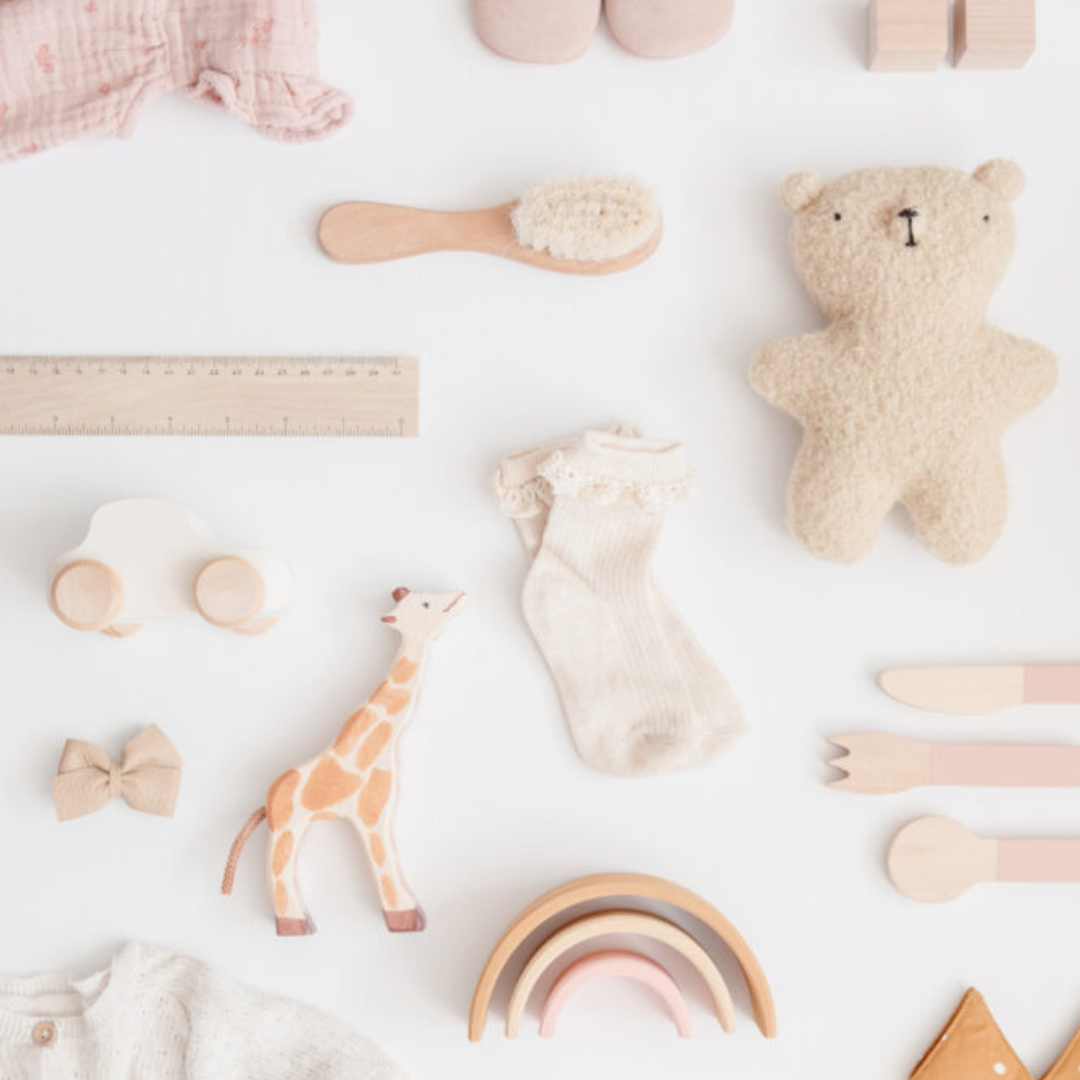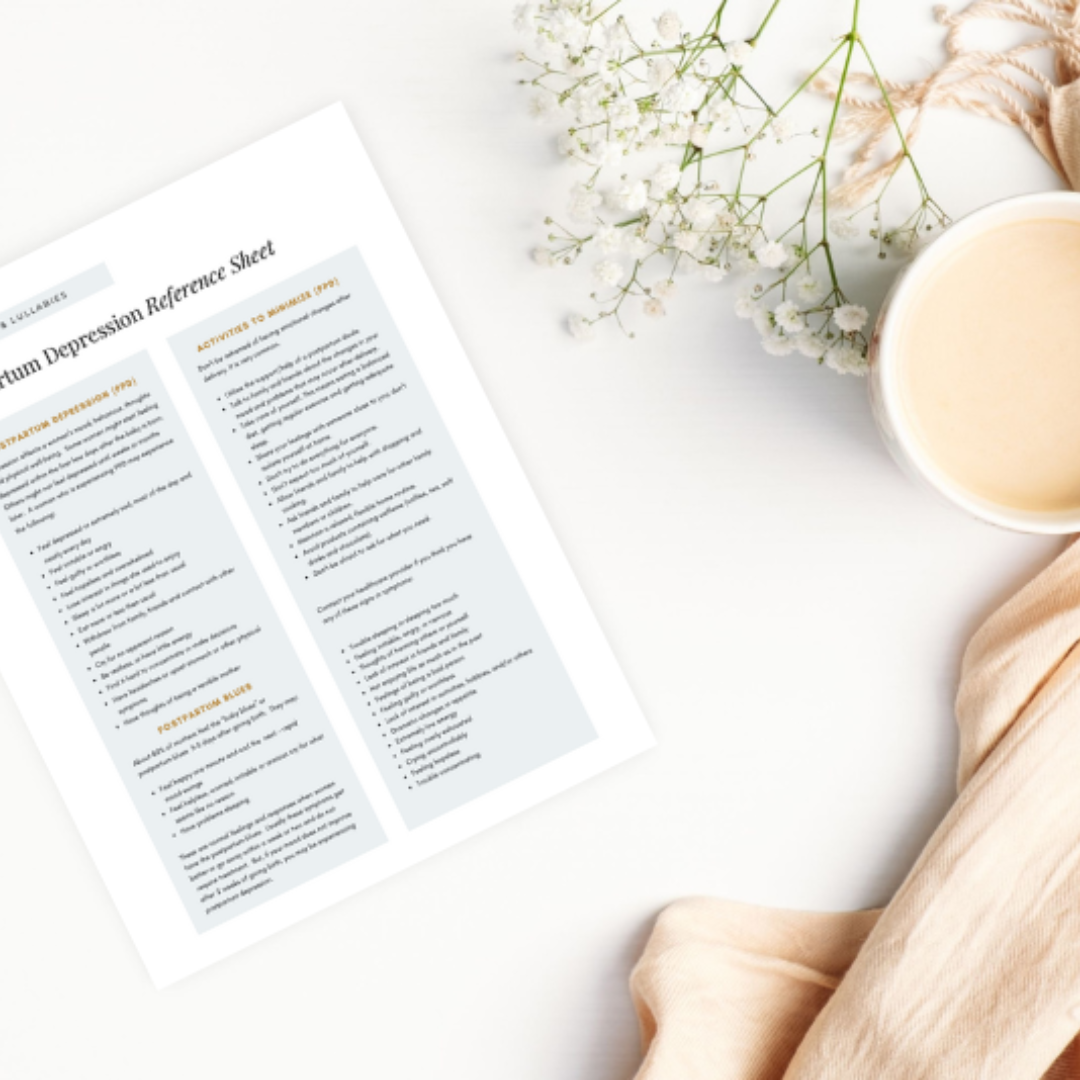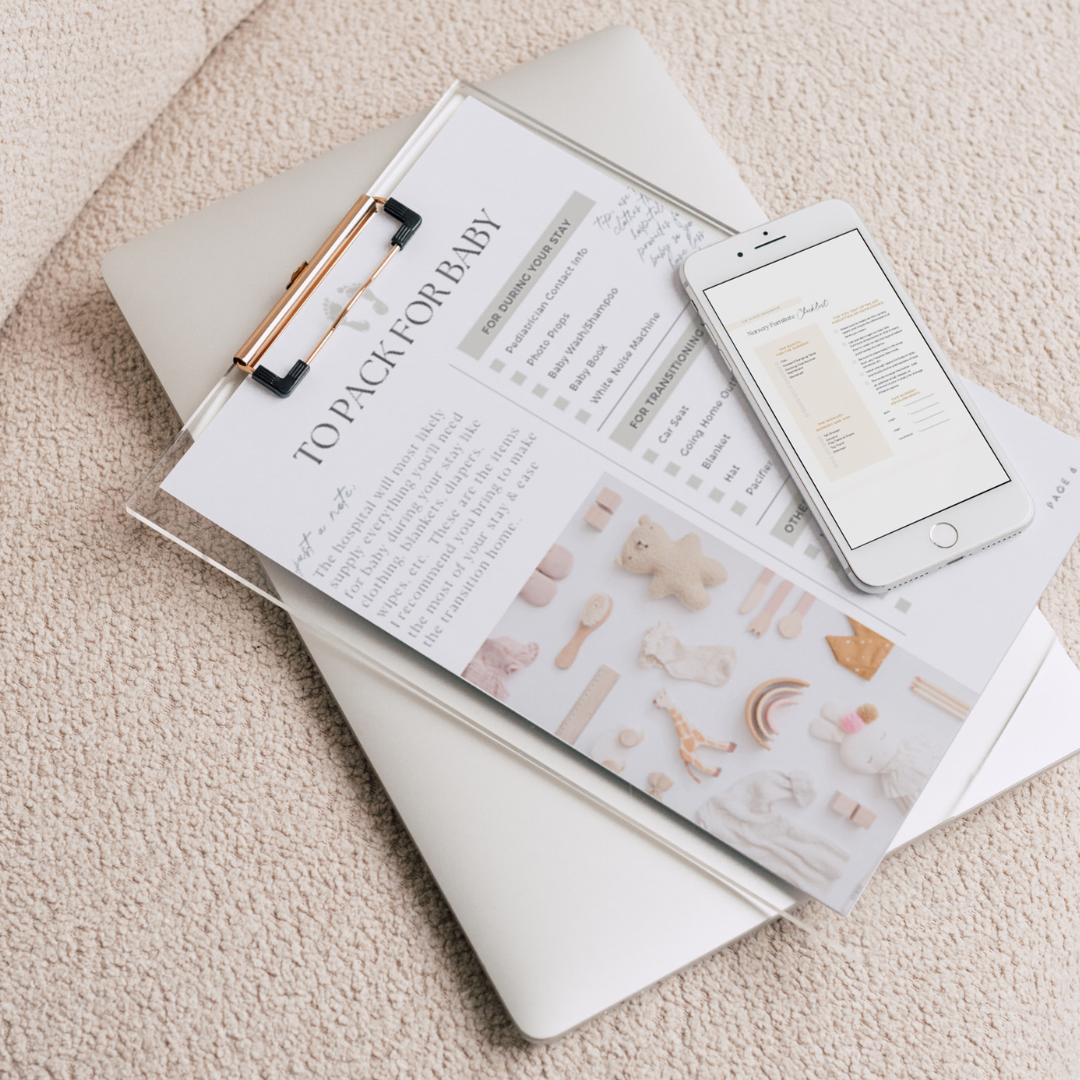
Do you feel like you spend half your life trying to get your baby to nap? If so, you are not alone. Many parents struggle with this issue. Luckily, there is hope! In this blog post, we will discuss some tips and tricks that will help your baby nap for longer periods of time. We will also talk about the importance of napping and how it can benefit both you and your child. So, if you are looking for ways to get your little one to sleep more soundly, keep reading!
{We are a participant in the Amazon Services LLC Associates Program, an affiliate advertising program designed to provide a means for us to earn fees by linking to Amazon.com and affiliated sites. To learn more about affiliate links, click here!}

How Much Sleep Should My Baby Be Getting?
How much sleep your baby needs depends on a few factors, including their age, weight, and health. The following is a general guide for how much sleep your baby should be getting each day:
-Newborns (0-12 weeks): 14-17 hours
-Infants (12-18 months): 12-15 hours
-Toddlers (18 months – 24 months): 11 – 14 hours
As you can see, the amount of sleep your baby needs decreases as they get older. This is why it is important to establish healthy sleep habits early on. If you wait until your child is a toddler to start working on their sleep, you may have a harder time getting them to cooperate.
Nap Schedule By Age
When it comes to naps, every baby is different. Some little ones are independent sleepers from the start, while others need a bit more help in learning how to fall asleep on their own. However, there are some general guidelines that can be useful in creating a nap schedule for your baby. For example, younger babies typically need two or three naps each day, while older babies may only need one long nap. Additionally, it’s important to create wake windows between naps so that your baby isn’t overtired when it’s time to sleep again. With a little trial and error, you’ll eventually find a nap schedule that works for your little one.
Newborn Sample Schedule
The early days with a newborn can be exhausting. Between feedings, diaper changes, and trying to get some sleep yourself, it can be tough to find a moment to relax. However, establishing a regular nap schedule for your baby can help both of you get the rest you need. Newborns typically sleep for 16-20 hours a day, so they’ll need several naps spread throughout the day. The following is a sample schedule that can help you get started:
Early Morning – 7:00 a.m.
- Feeding, diaper change and hygiene care
- Waketime: minimal
- Down for a nap
Mid-morning – 9:30 a.m.
- Feeding, diaper change and hygiene
- Waketime: minimal
- Down for a nap
Afternoon – 12:00 p.m.
- Feeding, diaper change and hygiene care
- Waketime: minimal
- Down for a nap
Mid-afternoon – 2:30 p.m.
- Feeding, diaper change and hygiene care
- Waketime: minimal
- Down for a nap
Late Afternoon – 5:00 p.m.
- Feeding, diaper change and hygiene care
- Waketime: minimal
- Down for a nap
Early Evening – 8:00 p.m.
- Feeding, diaper change and hygiene care
- Waketime: minimal
- Down for a nap
Late Evening – 11:00 p.m.
- Feeding, diaper change, down for sleep.
Allow baby to wake up naturally, but do not let him sleep longer than 4 hours continuously at night for the first four weeks.
Middle of the Night – 1:30 a.m.
- Feeding, diaper change and right back to crib
(Usually between 1:00 and 2:30 a.m.)
Pre-morning – 4:00 a.m.
- Feeding, diaper change and right back to crib.
(Usually between 3:30 and 5:00 a.m.)
“Keep in mind, you will want to personalize the times to fit your baby’s needs. After all, each baby is different and even though we are talking about the first two weeks of your baby’s life, you as her parent will understand her better than anyone.” Babywise Life

3- 6 Month Old Sample Schedule
After 3 months old, babies need 12-15 hours of sleep in a 24-hour period. At this age, babies are sleeping less during the day and more at night. Here’s a sample nap schedule that can help your little one get the rest they need:
Early Morning: 6:30-7:00 a.m.
- Feeding
- Waketime
- Down for a nap
Mid-morning: 9:30 a.m.
- Feeding
- Waketime
- Down for a nap
Noontime: 12:30 p.m.
- Feeding
- Waketime
- Down for a nap
Mid-afternoon: 3:30 p.m.
- Feeding
- Waketime
- Down for a nap
Late Afternoon: 5:30-6:00 p.m.
- Feeding
- Waketime
- Down for a nap
Evening: 8:30-9:00 p.m.
- Feeding and down for the night.

6-9 Month Old Sample Schedule
By 6 months old, most babies are sleeping through the night and only taking 1-2 naps during the day. Just like adults, babies need a regular sleep schedule in order to function at their best. However, crafting the perfect nap schedule can be a challenge, especially for families with busy schedules. For 6-9-month-olds, a typical nap schedule might look something like this:
Morning: 7:00 a.m.
- Feeding
- Waketime
- Down for a nap
Late Morning
- Feeding
- Waketime
- Down for a nap
Mid-Afternoon
- Feeding
- Waketime
- Down for a Catnap*
Late Afternoon/Dinnertime
- Feeding
- Waketime
Early Evening
- Early Evening Waketime
- 8:00-8:30pm: Liquid feeding, down for the night
* This is usually around dinnertime, (between 5:00 p.m. – 6:00 p.m.).

9-12 Months
According to the National Sleep Foundation, 9-12-month-olds should be getting around 14 hours of sleep every day. However, that doesn’t mean that you should just plop them down in their crib and let them sleep for 14 straight hours. Instead, you’ll need to help them establish a regular nap schedule. A typical nap schedule for a 9-12-month-old might look something like this:
Morning: 7:00-8:00 a.m.
- Feeding
- Waketime
- Down for a nap
Mid-day
- Feeding
- Waketime
- Down for a nap
Late Afternoon
- Feeding*
- Waketime
- Dinner time with family**
- Early evening waketime
Bedtime
- 8:00 pm: Liquid feeding, down for the night
* Baby will receive his cereal, vegetables or fruits at this feeding.
** Baby joins family mealtime with light finger foods. (This is more of a snack than a full meal.)

12 Months+ Sample Sleep Schedule
While every baby is different, most 12-18-month-olds need around 14-15 hours of sleep each day. This can be broken up into a few nap times and nighttime sleep. A typical nap schedule for a 12-18-month-old might look like this:
Breakfast: 7:00 a.m.
- Feeding
- Waketime
- Down for a nap
Midday
- Feeding
- Waketime
- Down for a nap
Late Afternoon: 4:00-5:00 pm
- Snack after nap
- Waketime
- Dinner time with family
- Early evening waketime
Bedtime: 8:00 pm
- Down for the night

Of course, every baby is different and some may need more or less sleep than others. If you’re not sure how much sleep your baby needs, talk to their pediatrician. They’ll be able to help you figure out the perfect nap schedule for your little one.
Now that we have discussed how much sleep your baby needs, let’s talk about ways to get them to take longer naps.
10 Simple Tips To Help Your Baby Nap Longer
If you’re like most new parents, you probably spent the first few months of your baby’s life sleep-deprived and feeling like you’d never get a good night’s rest again. However, there are some simple things you can do to help your baby sleep longer and get on a better sleep schedule. Here are 10 sleep tips for exhausted parents:
Swaddle Your Baby
Any parent of a new baby can attest to the fact that sleep is a precious commodity. And while you may not be able to get more than a few hours at a time, there are ways to help your baby sleep longer. One method is known as swaddling.
Swaddling involves wrapping your baby in a blanket or sleep sack so that they are snug and secure. This can help to calm a fussy baby and allow them to sleep for longer periods of time.
In addition, swaddling helps to prevent your baby from startle reflex, which can wake them up during the night. So if you’re looking for ways to help your baby sleep longer, swaddling may be worth a try.
Shorten Baby’s Awake Time
For new parents, a baby’s sleep schedule can seem like a never-ending battle. However, there may be a simple solution: shorten the amount of time your baby is awake.
According to sleep experts, babies have a natural inclination to sleep for long stretches at night, but their circadian rhythms can be easily disrupted. By keeping your baby awake for shorter periods during the day, you can help reset their internal clock and encourage them to sleep for longer periods at night.
So if you’re struggling to get your baby to sleep through the night, it may be tempting, but don’t skip those necessary daytime naps.
Optimize Baby’s Sleep Environment
One of the easiest ways to promote better sleep for baby is to optimize their sleep environment. White noise can help to mask any outside noise that might wake them up, and blackout curtains can prevent light from coming in and disturbing their sleep. In addition, it’s important to keep the room at a comfortable temperature – not too hot or too cold. By creating an ideal sleep environment, you can help your baby get the best possible sleep.

Teach Healthy Sleep Habits
For most people, getting a good night’s sleep is all about developing healthy sleep habits. But for parents of young children, it can feel like there’s no such thing as a good night’s sleep. Thankfully, there are some things that parents can do to help their children fall asleep independently and get the rest they need.
One of the most important things is to establish a bedtime routine. This can include things like reading a book or taking a bath. It’s also important to make sure that the child’s bedroom is dark and quiet.
During the day, parents should try to keep their baby’s naps on a regular schedule. By teaching healthy sleep habits, parents can help their children get the rest they need to grow and thrive.
Follow A Relaxing Pre Nap Routine
Another way to help you baby nap longer, is to establish a relaxing pre-nap routine…like a miniature version of their bedtime routine. This might involve dimming the lights in your baby’s room, reading them a calming story, or singing a gentle lullaby. By following a relaxing sleep routine, you’ll help your child to wind down and prepare for sleep. As a result, they’re likely to sleep for longer periods and wake up feeling refreshed and well-rested.
Make Sure Baby’s Getting Enough Nighttime Sleep
A well-rested baby is a happy baby. And what’s the best way to ensure a good night’s sleep? By following a relaxing routine, of course! By taking some time to wind down before sleep, your little one will be more likely to sleep soundly through the night. Plus, it’s the perfect opportunity for some quality bonding time.
So what should you include in your baby’s sleep routine? First, dim the lights in their room to create a calming atmosphere. Then, give them a gentle massage with some lavender-scented lotion to help them relax. You can also read them a quiet story or sing them a lullaby. Finally, lay them down in the crib and kiss them goodnight. Sweet dreams!
Learn Baby’s Sleepy Cues
If you’re a parent, then you know the drill. You’ve fed your baby, changed their diaper, and rocked them to sleep. But just as you’re about to put them down for the night, they wake up and start crying. It’s enough to drive any parent crazy. However, there is a way to avoid this situation. By learning to recognize your baby’s sleepy cues, you can put them down for a nap before they become overtired. Most babies will start to rub their eyes, yawn, or cry when they’re beginning to get sleepy. If you see these cues, it’s time to start winding down for the night. Of course, every baby is different, so it may take some trial and error to learn your child’s sleepy cues. But once you’ve got it figured out, nap time and bedtime will be a breeze.
Avoid An Overtired Baby
Most babies will show overtired cues before they’re actually ready to sleep. It’s important to learn your baby’s sleepy cues so you can put them down for a nap before they become overtired. Some overtired cues include:
– yawning
– rubbing their eyes
– being fussy or cranky
– pulling at their ear
If you see your baby exhibiting any of these overtired cues, it’s time to put them down for a nap. Let them fall asleep on their own so they can get the rest they need.
Establish a Good Bedtime Routine
A baby’s bedtime routine is important for many reasons. It helps baby wind down from the day, prepares them for sleep, and can be a special bonding time for parents and their little one. Of course, establishing a good bedtime routine can be easier said than done. Here are a few tips to help you get started:
1. Start with a bath: A warm bath is a great way to help baby relax and get ready for bed. Just be sure not to make it too hot!
2. Follow with massages: After the bath, give your baby a soothing massage. This will help them to drift off to sleep more easily.
3. Read a bedtime story: Bedtime stories are not just for kids! Reading aloud to your baby can be calming and helps to promote language development. Try selecting books with simple illustrations and repetitive text.
4. Put baby to bed drowsy but awake: It’s important that baby learn how to fall asleep on their own. To encourage this, put them down when they are drowsy but still awake. This way, they can practice falling asleep independently.
Adjust Nap Expectations With Baby’s Age
As any parent knows, getting your baby to take a nap can be a challenge. However, it’s important to keep in mind that babies of different ages have different sleep needs. For example, newborns generally need to sleep for about 16 hours a day, and should be nursed or given a bottle every 2-3 hours. By contrast, 3-month-olds typically need only about 14 hours of sleep per day, and can go 3-4 hours between feedings. As your baby gets older, his or her nap schedule will continue to change. So don’t get too frustrated if you can’t get your baby to take a long nap every day. Just adjust your expectations based on your baby’s age and stage of development.

Tips For Naps On The Go
For parents on the go, naps can be a lifesaver. But how can you ensure that your baby gets a good nap when you’re out and about? Here are a few tips:
If you’re using a stroller or car seat, make sure that your baby is comfortable and securely fastened in. Short naps are generally easier to take in these situations, so try to keep your child awake for at least an hour before attempting a nap. If your baby wakes up early, don’t worry – just try to resettle them and see if they’ll fall back asleep.
Note: Letting baby sleep unattended in a car seat is not recommended. The angle at which the car seat rests on a surface can cut off baby’s airway. It’s best to leave baby in the car seat base in the car for their nap with you watching over them. If you must take them out of the car, make sure to keep a close eye on baby and not leave him alone.
If you’re able to find a quiet spot for a longer nap, great! Make sure that the area is safe and free of hazards, and that your baby is well-covered with blankets or a sleeping bag. Be careful not to lay baby on a bed or couch unattended as it’s very easy for them to roll off or even suffocate on nearby pillows and blankets. Finally, don’t forget the all-important white noise machine – it can help your baby (and you!) relax and fall asleep.

Nap Time Essentials: At Home
- White Noise Machine
- Kyte Baby Sleep Sack
- Pacifier & Clip
- Monitor
- Black Out Curtains
- Board Books
- Owlet
- Swaddle Blanket (until baby is rolling over, then transition to a sleep sack)
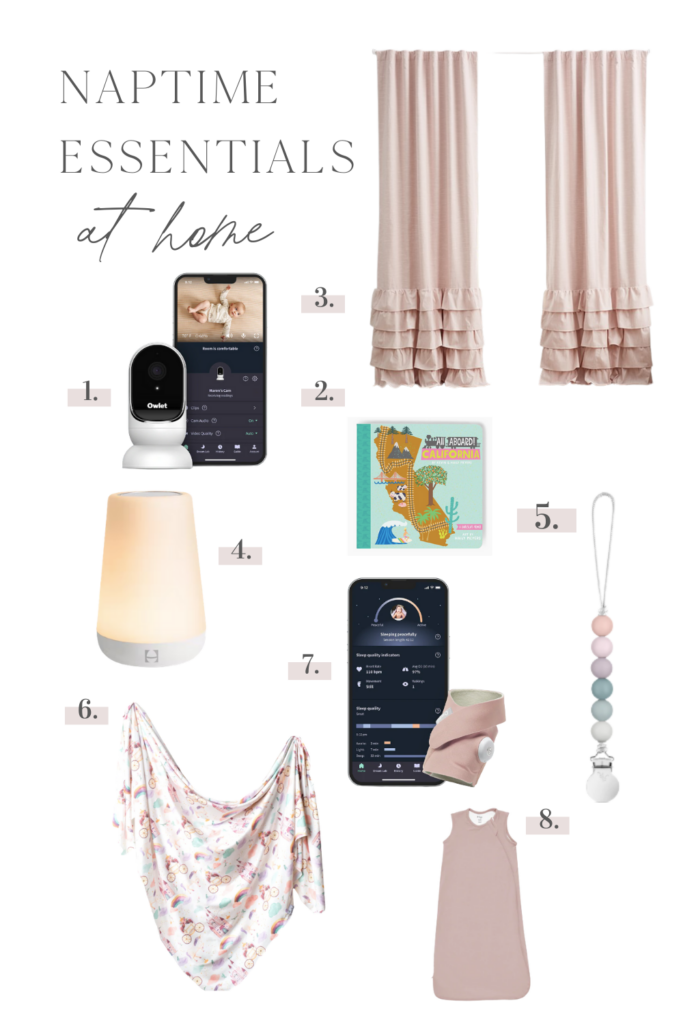
Nap Time Essentials: On The Go
- Small Fan
- White Noise Machine
- Car Seat Cover
- Light Muslin Blanket
- Adjustable Stroller
- Adjustable Wagon
- Pacifier & Clip
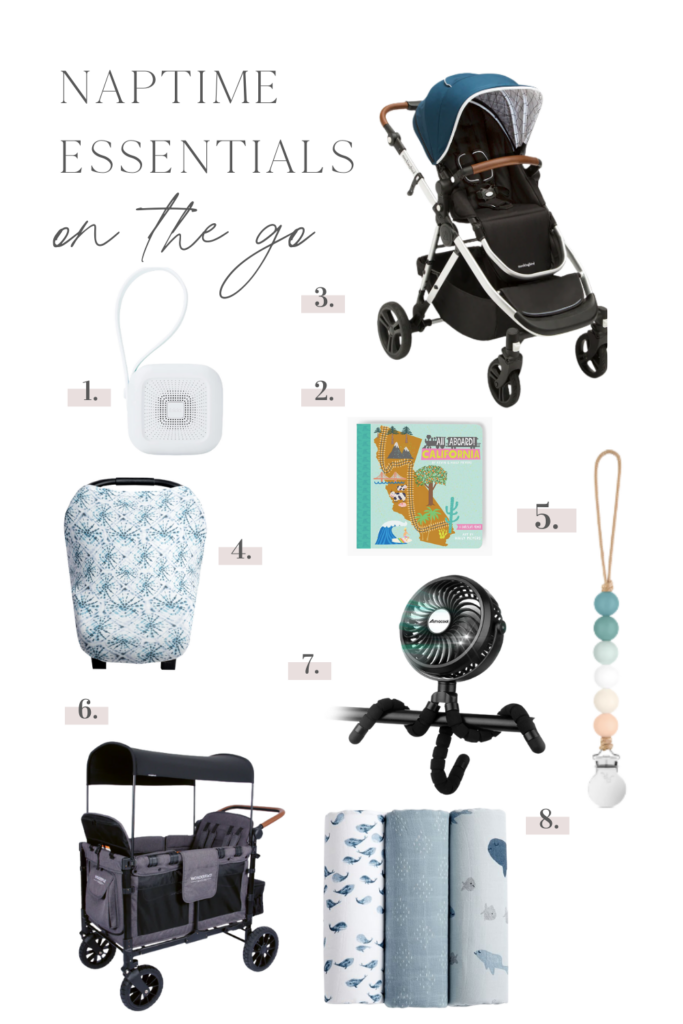
FAQs: How To Get Baby To Nap Longer
Q: Why does my baby only take 30-minute naps?
If you’re like most parents, you’ve probably wondered why your baby only takes 30-minute naps. There are a few possible explanations.
First, it could be that your baby is overtired. When babies get overtired, they have a harder time falling asleep and tend to sleep lighter, resulting in shorter naps.
Second, it could be that your baby is not getting enough daytime sleep. Babies need a lot of sleep, and if they’re not getting enough at night, they may make up for it by taking shorter naps during the day.
Finally, it could be that your baby is simply not a good napper. Some babies are just light sleepers and have a hard time sleeping for more than 30 minutes at a time.
If this is the case, don’t worry – there’s nothing wrong with your baby. Just try to make sure that they get plenty of nighttime sleep and nap when they’re tired. With time, they’ll likely outgrow this phase.
Q: How can I get my baby to nap longer during the day?
If your baby is only napping for 20 minutes at a time, there are a few things you can do to encourage longer naps.
First, try to create a calm and relaxing environment for your baby to sleep in. Make sure the room is not too hot or too cold, and that there is very little noise or light.
You may also want to try using a white noise machine or a sound app to help your baby fall and stay asleep. Another helpful tip is to establish a regular nap schedule and stick to it as much as possible. This will help your baby’s body get used to sleeping at certain times of day.
Finally, keep in mind that some babies simply need more sleep than others. If your baby seems cranky or fussy, it may be a sign that he or she needs more daytime sleep. By taking these steps, you can help your baby learn to take longer and more restful naps during the day.
Q: At what age do babies start having longer naps?
As any parent knows, getting a good night’s sleep is a top priority. But what about naps? When do babies start having longer naps? According to experts, the answer is around six months old. At this age, babies can sleep for longer periods of time during the day. They also begin to develop a regular sleep schedule, taking two or three naps each day. Of course, every baby is different, and some may start having longer naps earlier or later than six months.
Q: What to do if baby is refusing to nap?
If your little one is suddenly refusing to take a nap, there are a few things you can do to try and coax them back to sleep. First, make sure that their bedroom is dark and quiet. If there is any noise or light source that could be disrupting their sleep, try to eliminate it.
If that doesn’t work, you can try rocking them or singing a lullaby. Sometimes, all it takes is a little gentle movement and some soothing words to help them drift off.
If nothing else seems to be working, you can try offering them a small snack or drink. A full stomach can sometimes be the key to a sound nap.
However, if all else fails, it’s important to remember that sometimes babies just need a break. So don’t be afraid to let them stay up for a little while longer if they’re really fighting sleep. They’ll be back to their regular napping schedule soon enough.
Q: Where should my baby nap during the day?
Many new parents find themselves wondering where their baby should nap during the day. After all, there are so many options! The crib, the stroller, the car seat, the bouncy chair… It can be tough to decide. And let’s not forget about that ever-popular spot: the shoulder. But is there really a best place for baby to snooze? Well, that depends on a few factors.
If you’re looking for somewhere quiet and dark, the crib is probably your best bet. Plus, getting baby used to sleeping in their crib will make the transition to their own room that much easier later on, especially if they’re still sleeping in a bassinet next to your bed at night.
But if you need to be out and about during nap time, the stroller or car seat might be a better option. Just make sure they’re securely fastened into their car seat and stroller and not left alone.
As for the bouncy chair, swing, floor, etc. it’s great for when you need to keep an eye on baby. My advice would be however to not let this sleeping space become a habit as babies may get really used to the movement and not want to sleep in their crib or bassinet. Also, if baby is sleeping in an inclined position, always keep your eyes on them as they’re at increased risk of suffocation.
And as for the shoulder… well, let’s just say it’s not bad to snuggle your new baby during nap time and hole them. After all, you won’t ever get these snuggly baby days back!
Ultimately, there is no perfect answer when it comes to where baby should nap during the day. Just do whatever works best for you and your little one.
Q: Should baby nap in a dark room during the day?
When it comes to baby sleep, there are a lot of conflicting opinions out there. Some people swear by the power of white noise, while others believe that swaddling is the key to a good night’s sleep.
When it comes to napping, however, and trying to get baby to nap longer there is one rule I think can agree on: keep the room dark. Babies are designed to sleep during the day, so they don’t necessarily need darkness in order to do so. But, napping in a darker environment will help baby sleep longer which is a win-win for everyone!
So if you’re looking for your baby to get some good quality shut-eye, make sure to close the curtains and turn off any lights.
Q: How do I get my baby to nap without being held?
There are few things more frustrating than a fussy baby who just won’t nap. But before you resign yourself to hours of rocking and shushing, there are a few tricks you can try to get your little one to sleep without being held.
One option is to use a white noise machine. The sound of the machine can help to soothe your baby and lull them to sleep. Another option is to swaddle your baby in a soft blanket. This can help them feel warm and secure, making it easier for them to drift off.
Finally, try placing your baby in their crib when they are drowsy but still awake. This will help them get used to falling asleep on their own. With a little patience, you can successfully get your baby to take a nap without being held.
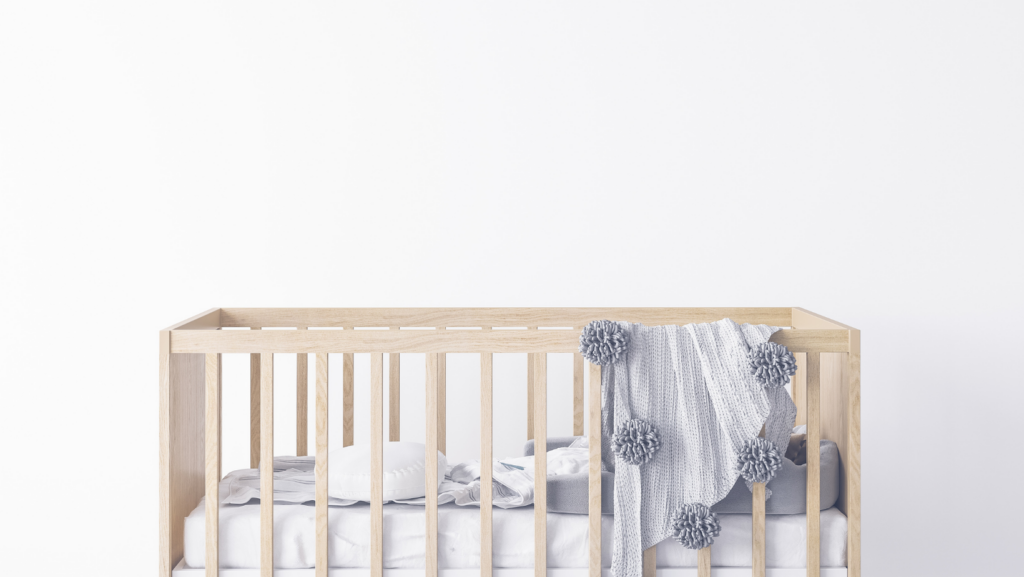
As you work on helping your baby take longer naps remember to be patient and consistent with your efforts. It may take some trial and error before you find what works best for your baby. But with a little patience and persistence, you can help your baby develop healthy sleep habits that will last a lifetime.
More Posts You’ll Love…
- How To Swaddle A New Baby
- Ultimate Guide to Baby Essentials
- Best Gifts for Baby’s First Christmas
- 8 Special Ways To Celebrate Baby’s 1st Thanksgiving
- 50+ Tips for New Moms To Help You Survive The 1st Year
- Best Baby Gear of 2020
Stephanie Wilson



